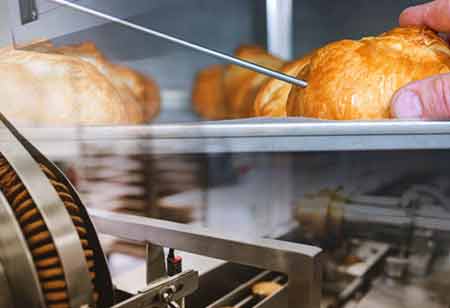THANK YOU FOR SUBSCRIBING
Be first to read the latest tech news, Industry Leader's Insights, and CIO interviews of medium and large enterprises exclusively from Food and Beverage Tech Review
Global Snack Food Market Players 2022-2031 Forecast
According to Snack Food Global Market Report 2022 – Market Size, Trends, And Global Forecast 2022-2026,' the global snack food market is expected

By
Food and Beverages Tech Review | Tuesday, March 29, 2022
Stay ahead of the industry with exclusive feature stories on the top companies, expert insights and the latest news delivered straight to your inbox. Subscribe today.
The snack food market size is expected to grow to USD 334.58 billion in 2026 at a CAGR of 9 per cent.
FREMONT, CA: According to Snack Food Global Market Report 2022 – Market Size, Trends, And Global Forecast 2022-2026,' the global snack food market is expected to grow at a CAGR of 9 per cent to USD 334.58 billion in 2026. Food and beverage industries are likely to see increased profit margins as a result of the overproduction of certain crops. Manufacturing companies will be able to boost efficiency and drive the snack food sector forward with higher profit margins. The snack food market comprises snack food sales by snack food producers (organisations, sole traders, and partnerships). Salting, roasting, frying, cooking, or canning nuts; processing grains or seeds into snacks; producing peanut butter; or manufacturing potato chips, corn chips, popped popcorn, hard pretzels, pork rinds, and similar snacks are all part of the snack food sector. The companies package and sell their products to both individual clients and commercial organisations through a variety of distribution channels.
To increase production efficiency, snack food manufacturers are implementing robotics and automation technology. Robotic technologies automate batching, conveying, processing, storage, and packaging of savoury snack goods, according to the snack food market report, reducing production cycle time and increasing output. Snack processing companies can use automation to improve plant conditions, reduce contamination, and eliminate human interaction, making the process safer for both workers and customers. Packaging robots, also known as collaborative or semi-autonomous robots, are utilised in a variety of automated operations. Over human labour, plants with fixed automation systems boost yields by at least two-three per cent.
PepsiCo Inc., Conagra Brands Inc., General Mills, McCain Foods Limited, Calbee Inc., The Campbell Soup Company, Kellogg Co, The Kraft Heinz Company, Want Want China Holdings Ltd, and TreeHouse Foods are some of the major players in the market. Asia-Pacific, China, Western Europe, Eastern Europe, North America, the United States, South America, the Middle East, and Africa are the regions. Australia, Brazil, China, France, Germany, India, Indonesia, Japan, Russia, South Korea, the United Kingdom, and the United States are among the countries represented.
I agree We use cookies on this website to enhance your user experience. By clicking any link on this page you are giving your consent for us to set cookies. More info







